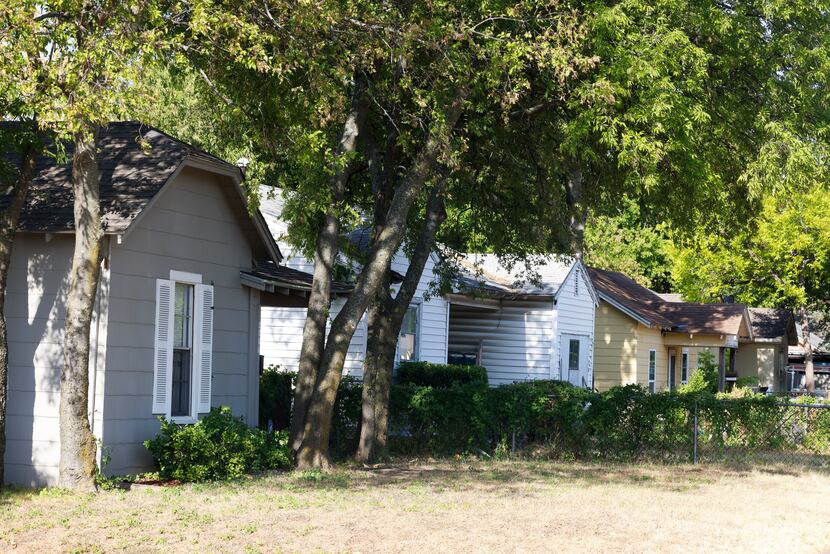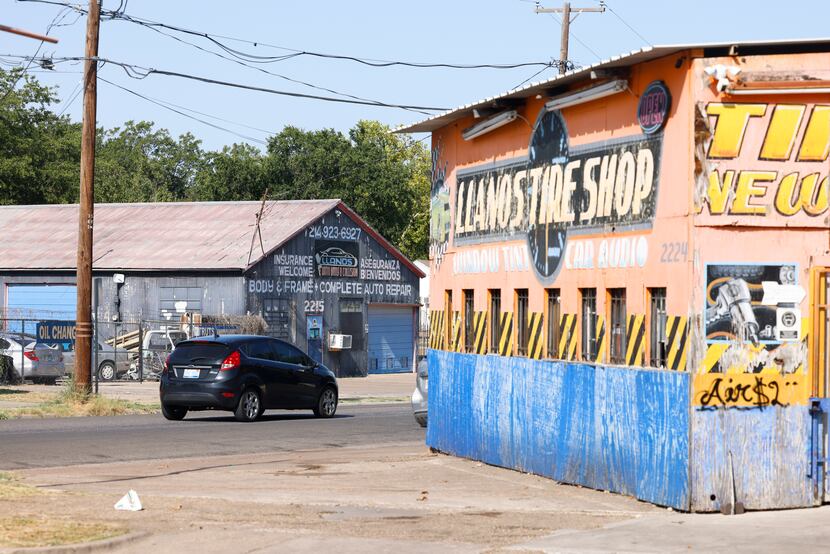Our city’s oldest working-class Hispanic neighborhoods have seen this movie before. Longtime residents became the collateral damage of developers’ big plans in West Dallas and North Oak Cliff.
But in the streets southwest of apartment-and-restaurant-choked Bishop Arts, Hispanic women and men are determined their community’s story will not end in another pernicious build-gentrify-displace cycle.
That same issue weighs heavily on the Dallas Plan Commission, where the future of a dozen or more neighborhoods — a huge five-square-mile area lumped together as the West Oak Cliff Area Plan — awaits a vote.
The question is far from settled as to whether the recommendations will protect the character of existing neighborhoods while addressing growth and housing shortages citywide.
Plan commission chair Tony Shidid ended hours of hard questions and overwhelmingly critical public comment Thursday with a challenge for city planners: Before his group’s Aug. 18 meeting, take a fresh look at finding a solution that he and colleagues don’t fear will “unleash all sorts of unintended consequences in this area.”
As part of that next meeting, commissioners also will take a bus tour of the targeted neighborhoods. Whatever they eventually decide, the City Council has the ultimate say.
The controversial blueprint for west Oak Cliff, a name first coined to lasso together a range of neighborhoods for planning purposes, has been in the works since early 2020.
Elmwood, on the eastern end, has long been more hipster than Hispanic, solidly middle-income and professional homeowners settling for years into its patch of Tudor cottages and mid-century-moderns.
But Elmwood is largely the exception in the west Oak Cliff plan.
Go west and you’ll find a part of Dallas you’ve likely never visited: Street after street of little wood-frame homes and smatterings of small businesses — many without the protection of a neighborhood association and all of them vulnerable to market forces in a housing-squeezed city.
Council member Chad West says preserving those areas is part of why he launched the planning initiative.
And what’s not to like about his stated goals? Protect single-family neighborhoods. Retain residents and attract new ones with affordable housing options. Preserve historic buildings and expand green spaces.
But the resulting hundred-plus-page plan — too ambitious and complex for its own good — leaves me queasy that it could as easily spark another Bishop Arts as protect the character and affordability of existing neighborhoods.
My concerns — and more importantly, those of local advocates — are legitimate in a city where growth invariably disregards anyone in its way.
Even the most benign elements of the plan — a greener community with good sidewalks and streets — leave nervous neighbors asking, “Is this for us or is this for the people who are coming?”

Mayra Chavez, one of many young Hispanics who live in multigenerational homes in the South Edgefield neighborhood near the Tyler-Vernon DART light-rail station, shared those concerns with me Wednesday night.
As a child walking to school, Chavez dreamed of sidewalks rather than sharing the community’s lousy streets with impatient drivers. At long last, it appears South Edgefield may get decent infrastructure, but now she’s more concerned about losing the fabric of her neighborhood.
Chavez says her godmother recently was priced out of her home as landlords raise rents in anticipation of the plan’s passage. “The city wants to say they have measures in place against displacement, but certain things just feel different,” she said.
“We were the area least represented in this process and now we face the biggest potential change,” she said.
Chavez and her family knew nothing about the West Oak Cliff Area Plan until neighbor David Dockery sounded the alarm.
The Dockery family’s roots in South Edgefield trace back to the 1920s. Now he fears that the area plan opens the door for his community to become nothing more than history. “This is something someone else wants and it’s being forced upon us,” he said.

Criticism of the process, led by steering committee members selected by West and much of it accomplished while COVID kept people apart, began early after initial meetings and documents failed to include Spanish translations.
More recently, the plan’s prohibition of auto-repair shops — the mom-and-pop lifeblood of this part of Dallas — created a huge backlash. Even after the city cut that language, a dozen shop owners and workers showed up Thursday to plead that the prohibitions not reappear in the final plan.
The stickiest of sticking points remains the swath of density that the plan recommends in the quiet frame-cottage neighborhood of South Edgefield, where Chavez and Dockery live.
City Hall planner Daniel Church says allowing new housing types — duplexes, triplexes and quadplexes, narrow homes and cottage homes, but not townhouses and apartments — in the one-half-mile area around the area’s two stations can bridge neighbors’ concerns and the City Council’s call for increased density in those spots.
Many South Edgefield neighbors say that increase in density will only accelerate rising property rates and displacement.
Look anywhere in Dallas — most recently Elm Thicket-Northpark and Mount Auburn — and the truth is undeniable: Existing housing must be protected because whatever is built in its place will never be affordable for the people who have long lived here.
Developers’ teardown-rebuild financial equation always sends them into Black and Latino neighborhoods, especially those that aren’t effectively organized and don’t have a pipeline of influence into City Hall.
The city team leading this effort maintains that the west Oak Cliff recommendations won’t touch 67% of the area and the other 33% would see, at most, minor changes.

Plan commissioner Deborah Carpenter pushes back on that contention. “What’s the possibility you will destabilize the neighborhood by fundamentally altering the pattern?” she asked. “That doesn’t seem a minor effect.”
“I fear where we have landed is a report that isn’t really following the recommendations of the neighborhood,” she said.
Many of those I heard from said credit for finally getting the often-unheard Hispanic voices into this conversation goes to Albert Mata, with the Somos Tejas community engagement group, and Yolanda Alameda, with the West Oak Cliff Coalition and the Polk-Vernon neighborhood association.
Both Mata and Alameda remain critical of what they say has been the city’s insufficient communication efforts. “Even when the city did begin reaching out in areas such as South Edgefield, they have been reluctant to put sufficient weight behind it,” Mata told me.
I’m not here to portray the city and the steering committee as nefarious bad guys in this controversy. Any area plan this large was destined for communication shortcomings.
Now the gnarly push-pull between the need for housing and its unintended consequences has again landed in the lap of the City Plan Commission — unpaid volunteers who give up huge chunks of their time to do consequential and mind-numbingly wonky work rarely noticed by the rest of us.
That’s why it was heartening to see those commissioners dig deep and ask thoughtful questions of the several dozen speakers on hand, of whom only one spoke in favor of the plan. Then for Shidid to ask city staff to scrub its proposals one more time.
I wouldn’t pretend to have the exact formula for the best way forward. But I do believe the time to protect these neighbors is now — before the speed of change, driven more by market forces than politics, overruns a part of our city that currently is working just fine for those who call it home.

